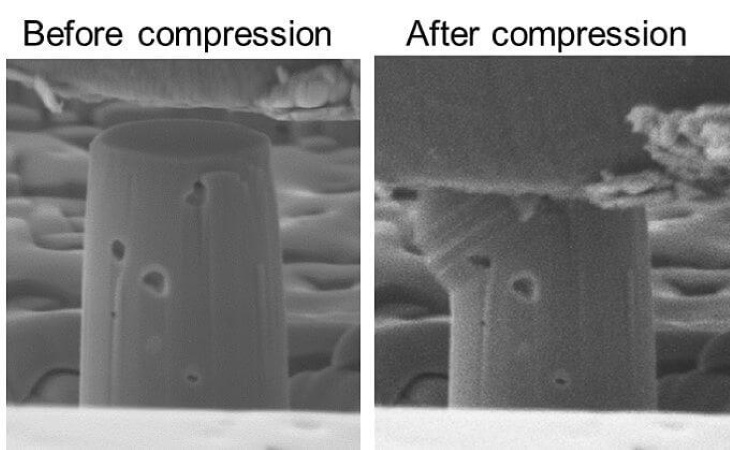
Something as simple as an electric field could soon make everything from wartime missiles to drinking mugs easier to produce and more resilient to fracture.
Items such as drinking mugs, missile heads, thermal barrier coatings on engine blades, auto parts, and electronic and optic components are commonly made with ceramics. But while ceramics are mechanically strong, they tend to fracture suddenly when just slightly strained under a load unless exposed to high temperatures.
Researchers at Purdue University have now developed a new process to help overcome the brittle nature of ceramics and make them more ductile and durable. Termed ‘flash sintering’ by the Purdue team, the process adds an electric field to the conventional sintering process used to form bulk components from ceramics.
"We have been able to show that even at room temperatures, ceramics sintered with the electric field surprisingly deform plastically before fracture when compressed at high strain," said Haiyan Wang, professor of engineering at Purdue University.
In a paper on this work in Science Advances, the researchers report that applying an electric field during the formation of ceramics makes the material almost as easily reshaped as metal at room temperatures. The Purdue team tested the process on titanium dioxide, a widely used white pigment, and found that it significantly enhanced the ceramic’s room-temperature ductility. They attributed this to the unusually high-density of defects, such as stacking faults, nanotwins and dislocations, formed through the ‘flash sintering’ process.
"The existence of these defects removes the need for defect nucleation in ceramics, which typically requires a large nucleation stress, greater than the fracture stress of ceramics," Wang said.
"Nanotwins have been introduced in various metallic materials to improve strength and ductility. However, there are little prior studies that show nanotwins and stacking faults can significantly improve the plasticity of ceramics," explained Jin Li, a postdoctoral fellow at Purdue University and first author of the paper. "Our results are important because they open the door for using many different ceramics in new ways that can provide more flexibility and durability to sustain heavy loads and high temperatures without catastrophic brittle failure."
Improved plasticity for ceramics means more mechanical durability during operation at relatively low temperatures. The titanium dioxide sample could withstand almost as much compression strain as some metals do before cracks started to appear.
"These ductile ceramics find many technologically important applications," said Xinghang Zhang, professor of materials engineering and co-principal investigator on the research team. "It can be applied to defense operations, automobile manufacturing, nuclear reactor components and sustainable energy devices."
This story is adapted from material from Purdue University, with editorial changes made by Materials Today. The views expressed in this article do not necessarily represent those of Elsevier. Link to original source.




